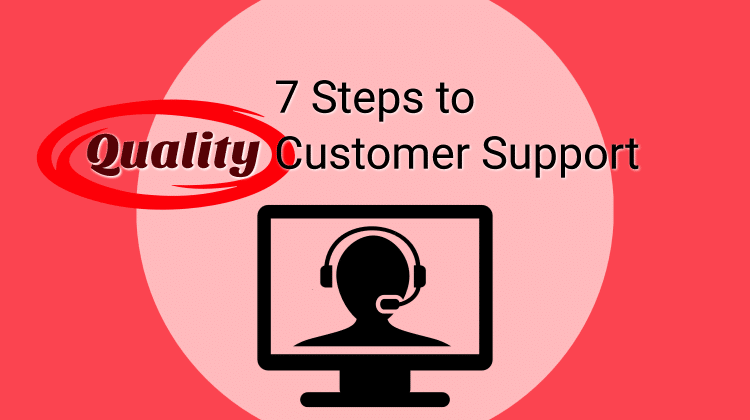Customer support isn’t easy. Any business owner can tell you that once the customers start coming in, it becomes really difficult to keep up with your day-to-day routine. Even more difficult is that you have to keep every customer satisfied, because in essence, they are what keeps your business going.
Whether you’re providing support by yourself or you’ve got a small team dedicated to helping your customers, make sure you’re following these steps for maximum customer satisfaction.
Step 1 – Know Your Product
What are you selling? Why is it useful? What can go wrong while using it? How often does this happen? These are all questions that you and your team need to know the answers to. It’s not enough to just be helpful. You need to be an expert.
Try using your product just as your customer would. Figure out what could lead to dissatisfaction with your product. Knowing in advance the issue that your customer is calling with, ensures that you are prepared to handle your customer quickly and efficiently.
Step 2 – React Quickly and Appropriately
Customers don’t like to wait. Period. Do you want to really stand out among the competition? React quickly to customer queries. An answer within 24 hours of receiving your customer’s question ensures that the problem is being taken care of. Want bonus points? Reply within the hour and you’ll really wow them.
Also make sure that you are replying accordingly. Don’t ask for details that the customer has already specified. You don’t want your customers thinking they aren’t getting the attention they deserve.
Step 3 – Be Patient and Understanding
Sometimes people get frustrated. It might not have even been your product that got them in this mood. Regardless of the reason, it’s human nature to be a bit mad when something doesn’t go as you planned it. A good customer support specialist knows this and will never fuel that frustration. Instead, the specialist would try to calm the customer and understand the issue.
Never should your customer read an email, or end a call in a worse mood than before. However, if the customer becomes abusive, it’s time to draw a line. Give the customer a warning, and if all else fails, inform the customer that you are currently unable to help them and ask them to call back at a later time when they are feeling better.
Step 4 – Personalize the Correspondence
Don’t be afraid to add a personal touch to your emails or during your discussions on the phone. Most customers enjoy being able to reach out to a real person who wants to help. Just make sure not to overdo it. A bit of personalization here and there can go a long way, but too much can lead to the customer questioning you as a professional.
Put yourself in the customer’s shoes and imagine that you were calling with the same issue. What would you like to hear over the phone or read in an email? Now try it in your next correspondence and take note of the results.
Step 5 – Set up Multiple Channels of Support
Customers can be of different ages and backgrounds. Just because the majority of your customers use social networks to reach out doesn’t mean you shouldn’t set up an email inbox. Not everyone uses Twitter or Facebook, so it’s always a good idea to set up multiple channels for customers to reach you through.
Likewise, a phone line might be the preferred method of communication for customers who are eager to get to the point. It may seem difficult to handle all of these channels at once, but a good specialist should also be a multitasking pro.
Step 6 – Be Prepared for Foreign Languages
The beauty of customer support is that you get to communicate with all types of different customers from countries all around the world. Not all of these customers will be fluent English-speakers, so it’s a good idea to have some type of back-up plan.
You could invest in quality translation software, but a specialist who speaks more than one language would be the best option. For example if your customers are mainly in the US, then a Spanish-speaking specialist could be useful. Likewise if your customers are from Canada, then a French-speaking specialist might be what you need.
Step 7 – Invest in Quality Tech
In today’s world, customer support and technology go hand-in-hand. Investing in the proper solution for your business is a major decision that you will have to make. In the beginning, you might be able to use just email and your mobile phone, but once you start getting more and more messages and calls, you’ll need a way to keep track of which issues are resolved and which are still awaiting an answer.
There’s an abundance of software options for you to choose from and most of them offer a number of different service plans. Depending on the needs of your business, you can pick the one that suits your budget and needs the best, but try to stick to the more popular services, as they are usually better maintained in the long-term.
Having followed these seven steps, you can be sure that your support is top-notch, but don’t forget about the most important component of customer support – the people! Whether you’re currently handling it all by yourself or you’ve made the transition to having a small team provide support, it’s important that your people are friendly, likable, and interested in what they do. Remember – customer support is what can make or break your business.


No comments:
Post a Comment